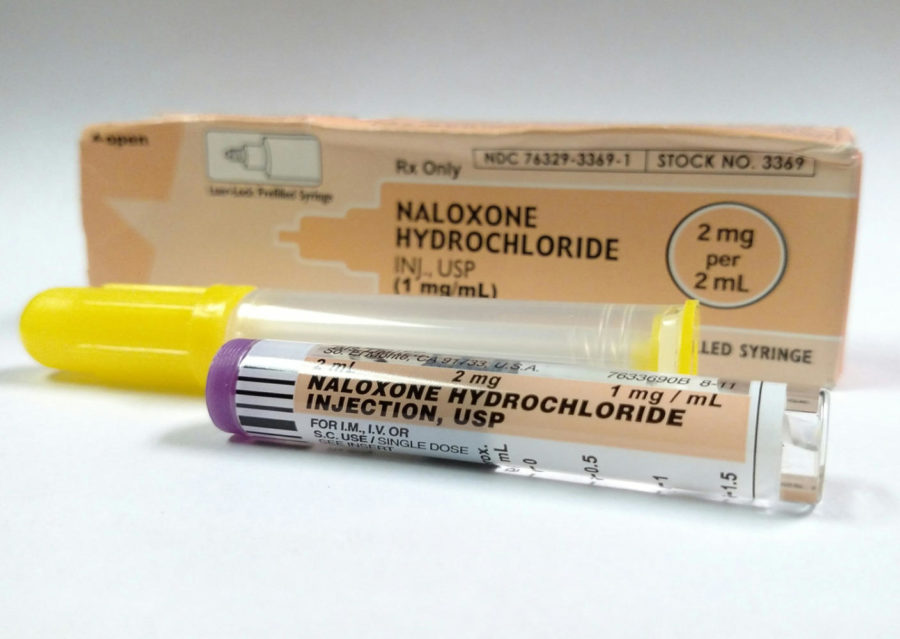Nearly 3,000 Pennsylvanians died of opioid overdoses in 2015, according to the Pitt Public Health Dynamics Lab.
But researchers at Pitt are working to change that statistic.
Michael Mallon, the project coordinator for Pitt’s Graduate School of Public Health’s Opioid Initiatives, helps arrange research projects to learn more about the opioid crisis. He said the opioid crisis can be traced back to 1979 and has grown significantly since then.
“Pennsylvania is one state that is being hit harder than others. The number of overdoses almost doubles every eight or nine years,” he said.
Pennsylvania Gov. Tom Wolf declared the heroin and opioid epidemic a statewide emergency to promote research efforts and treatment response to overdose cases Jan. 10 . The Pennsylvania drug-related overdose death rate in 2016 was 36.5 per 100,000 people, an increase from 26.7 per 100,000 people in 2015, according to a 2016 report prepared by the Pitt and the Drug Enforcement Administration Philadelphia Division. The researchers identified opioid traces, obtained through illicit means or prescribed by a doctor, in 85 percent of drug-related overdose deaths in PA in 2016.
“I am taking this step to protect Pennsylvanians from this looming public health crisis, and I am using every tool at my disposal to get those suffering from substance use disorders into treatment, save more lives and improve response coordination,” Wolf said.
To fight the increase in overdose deaths locally, Pitt and community groups are working together as part of this campaign to stop opioid overdose. Currently, the Franklin County Overdose Task Force is preventing opioid usage by hosting speaking events and sending people to local hospitals to meet with patients to assess their needs.
Despite the rising opioid usage rates in the state, Matthew Fogal, Franklin County district attorney and chairman of the task force, said his team is making progress in curbing overdoses. Fogal said the demand for naxolane, a drug often used by first responders to reverse the effects of an opioid overdose, has decreased in the area as a result of the team’s work. He said the task force was able to reach this level of impact with the help of the Pennsylvania Opioid Overdose Reduction Technical Assistance Center.
“TAC has been very helpful,” Fogal said. “They are facilitators that work selflessly behind the scene.”
TAC is a state-funded county outreach project that unites the opioid overdose data collection efforts of local coroner offices, public health and safety groups, police departments and substance abuse treatment services to decrease overdose incidents. Janice Pringle, an epidemiologist from the Graduate School of Public Health at Pitt, developed TAC in response to Pennsylvania’s rising overdoses. According to the Centers for Disease Control and Prevention, Pennsylvania has the fourth highest rate of overdose mortality rate in the nation, with Allegheny county ranked sixth in the state.
“What we are trying to do is get the same individuals to work together so that they can collaborate, join resources and be able reach a greater number of individuals who are at risk,” Pringle said.
TAC uses the collected data from opioid overdose cases to advise Pennsylvania counties on how to better address the epidemic through newly created strategies. Since its implementation in early 2016, TAC has helped county task forces establish various strategies such as law enforcement development, continual addict treatment and campaigns focused on eradicating stigmas surrounding drug users.
According to Pringle, TAC has successfully standardized opioid overdose death data collection across different counties in Pennsylvania and has improved those counties’ responses to overdose cases. TAC’s use of anecdotal evidence from cases, Fogal said, helped the task force utilize demographic data to determine groups of people most at risk. TAC also assisted the task force with identifying grants to help fund the task force.
While TAC is using overdose death data to better approach the crisis, Gerald Cochran, an associate dean for research at Pitt’s School of Social Work, received a $426,000 grant from the National Institutes of Health in 2017 to fund a research study that will test the effectiveness of Brief Intervention Medication Therapy Management in preventing and treating opioid medication abuse. BI-MTM is an intervention method where “patient navigators” meet with patients to identify and treat behaviors causing the misuse of prescription opioid medications.
“Patient Navigators help [patients] identify health concerns that they may have such as depression, PTSD, chronic pain, and we help the person find a care provider,” Cochran said. “Our goal is to help activate the patient in the management of their own health condition.”
In the study, when patients who are filling their opioid prescription score positive for misuse on a universal screening process, they have a 30 minute discussion with their pharmacist about adhering to the prescribed treatment plan. Patients randomly selected for the BI-MTM intervention will then be transferred to the patient navigators, who they will meet with for several sessions to discuss resources and options to prevent opioid misuse behaviors.
The pilot study of this project positively screened 17 percent of 350 patients for opioid misuse behavior across five pharmacies, and since the project began in May 2017, 20 percent of patients have been screened positively. When confronted with the issue of people falsely screening negative by lying about their usage to get access to opioid medication, Cochran said that, though he can’t prevent people from lying, he still feels satisfaction when helping people who do screen positive.
“We do know people are not telling the truth in some cases, but if we can help 20 percent of people, we think we are doing something that’s worthwhile,” he said.
Pringle said the University’s efforts in trying to reduce opioid overdose in Pennsylvania are a product of the University’s many resources and its role as a community leader.
“We have a lot of resources that can be very helpful,” Pringle said. “With an emphasis on us being a good community partner, we embraced the role of trying to reduce opioid overdose rates in Pennsylvania.”


